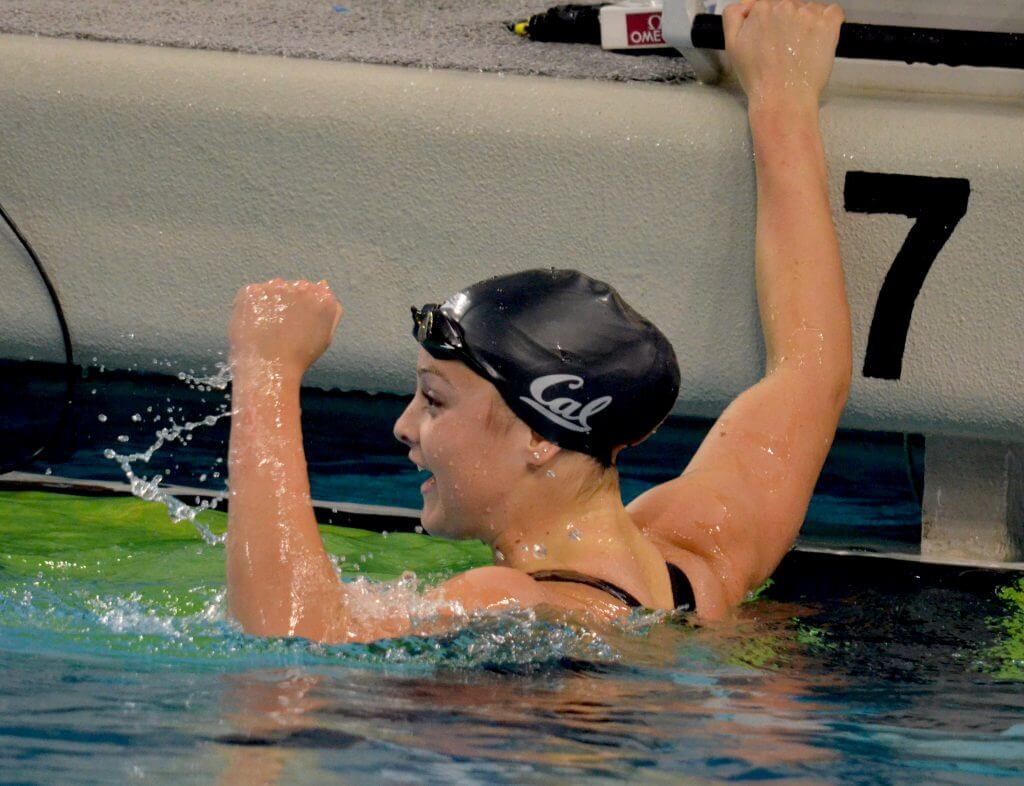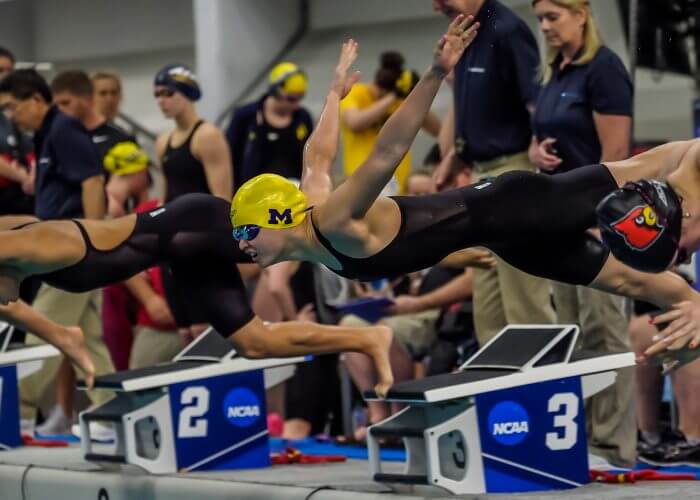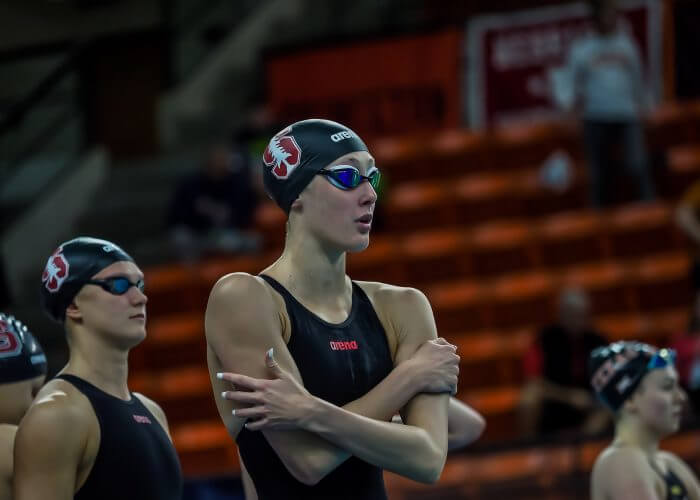Katie McLaughlin, Taylor Ruck Lead Quintet of Doubles at NCAA Championships (Video Interviews Included)

Katie McLaughlin did such a great job with her double last year that it became her norm.
The Cal senior trained all year to compete in the 100 fly and 200 free back-to-back at the 2019 NCAA Division I Women’s Championships. It once again worked as McLaughlin made the final in both events for the second consecutive year.
This time, it went even better as McLaughlin finished third in the 100 fly (49.97), breaking Natalie Coughlin’s school record in the event. She then finished seventh in the 200 free (1:43.72) just a few minutes later.
“I saw the board and I was like, ‘49.9, Wow!’ then I was like, ‘Wait that’s me! … Oh my gosh!” McLaughlin said.
“I didn’t know it broke the record. That is really cool, especially because Nat is such an amazing girl and swimmer, and is doing so many great things now. She is just awesome. I was really excited that I moved up into third, which was a few more points for Cal. That was the coolest thing.”
Her doing the back-to-back two years in a row doesn’t make it any less impressive.
She had maybe 10 minutes between races.
“I just hopped down and swam a little bit and re-put my cap on (after awards),” she said.
While the Friday double became the standard for McLaughlin, a feat that has been pretty rare in the sport, her success has trickled to schools around the country.
McLaughlin was stunningly one of five swimmers to make multiple individual finals on Friday.
Yes, five — though McLaughlin was still the only one to do it in back-to-back events.
“Maybe it is a trend,” McLaughlin said. “Maybe that will encourage more people to do it.”

Photo Courtesy: Peter H. Bick
Cal teammate Izzy Ivey, Michigan freshman Maggie MacNeil and Auburn senior Aly Tetzloff each reached the final in both the 100 fly and 100 back. Meanwhile, Stanford freshman Taylor Ruck reached the final in the 200 free and 100 back.
“Five really? … Dang!” Ruck said. “I think we all train for it. I felt ready.”

Photo Courtesy: Peter H. Bick
Ivey took sixth in the 100 fly (50.82) then fourth in the 100 back (50.42).
“The double is always a challenge,” Ivey said. “The amount of time was better than it was at Pac-12s in the 200 free and 100 fly (same as McLaughlin). I have been really able to push myself with the training we do at Cal. I couldn’t have asked for better swims — I went two best times. Katie and I talked at Pac-12s. We were there for each other and it was really good.”
MacNeil finished second in the 100 fly (49.66) and sixth in the 100 back (50.98). Tetzloff finished fifth in the 100 fly (50.61) and eighth in the 100 back (51.33).
But Ruck had the best double performance, finishing second in the 200 free (1:40.37) and third in the 100 back (50.34).
“This morning, it hurt really bad,” Ruck said. “I had 30 minutes in between, so it wasn’t quite as bad as some other people’s doubles. But after the 200 free, my legs hurt bad. I felt really good about the 200 free. It was a great race. I am happy I left it in the pool. The 100 back, I tried to switch gears as best as I could. I just wanted to race.”
Will the double be something that Ruck makes a regular practice as McLaughlin said. It will depend on where Stanford needs points, of course.
“We’ll see,” she said. “But if it happens, it happens.”
But the quintet proved that as daunting as a double can be — it is doable.
McLaughlin has made the back-to-back an art form that others have watched for two years.
No matter what happens with the underclassmen in the future, the daily double was back Friday — and at its best.



